13 Sales Productivity Tools to Boost Efficiency
Casey O'Connor
Contents
- The Role of Sales Productivity Tools in Modern Sales Processes
- Top Features to Look for in Sales Productivity Tools
- Types of Sales Productivity Tools
- How Yesware Enhances Your Sales Productivity
- Comparison: Yesware vs. Other Sales Productivity Tools
- How to Implement Sales Productivity Tools for Maximum Impact
- Try Yesware Today
Sales productivity is one of the most important factors in B2B sales success.
With so many moving pieces in today’s sales process, it can be easy to lose sight of the most important activities that need attention in order to keep the pipeline moving.
Even more complicated is the fact that these “most important activities” change regularly depending on the buyer — today’s B2B sales process is anything but linear.
Sales productivity tools can empower sales teams to reach their sales targets at every stage of the sales process to ultimately close more deals, regardless of the needs of any given buyer on any given day.
There are sales productivity tools and platforms for just about every productivity metric, from pipeline reports to email automation to employee training, and choosing the right ones can profoundly impact your team’s sales performance.
In this article, we’ll go over everything you need to know about sales productivity tools, including the role they play in the sales process, what to look for as you add platforms to your tech stack, how to implement them into your existing workflows, and more.
Here’s what we’ll cover:
- The Role of Sales Productivity Tools in Modern Sales Processes
- Top Features to Look for in Sales Productivity Tools
- Types of Sales Productivity Tools
- How Yesware Enhances Your Sales Productivity
- Comparison: Yesware vs. Other Sales Productivity Tools
- How to Implement Sales Productivity Tools for Maximum Impact
The Role of Sales Productivity Tools in Modern Sales Processes
Sales productivity tools are software platforms/apps that help sales teams manage the various aspects of their sales process in the most efficient way possible.
Sales productivity software is built to help sales reps save time on repetitive, complex, or otherwise automation-worthy processes.
Most sales reps spend only about a third of their time performing revenue-generating sales activities — the more time they can save on administrative tasks, the more opportunities they can nurture. 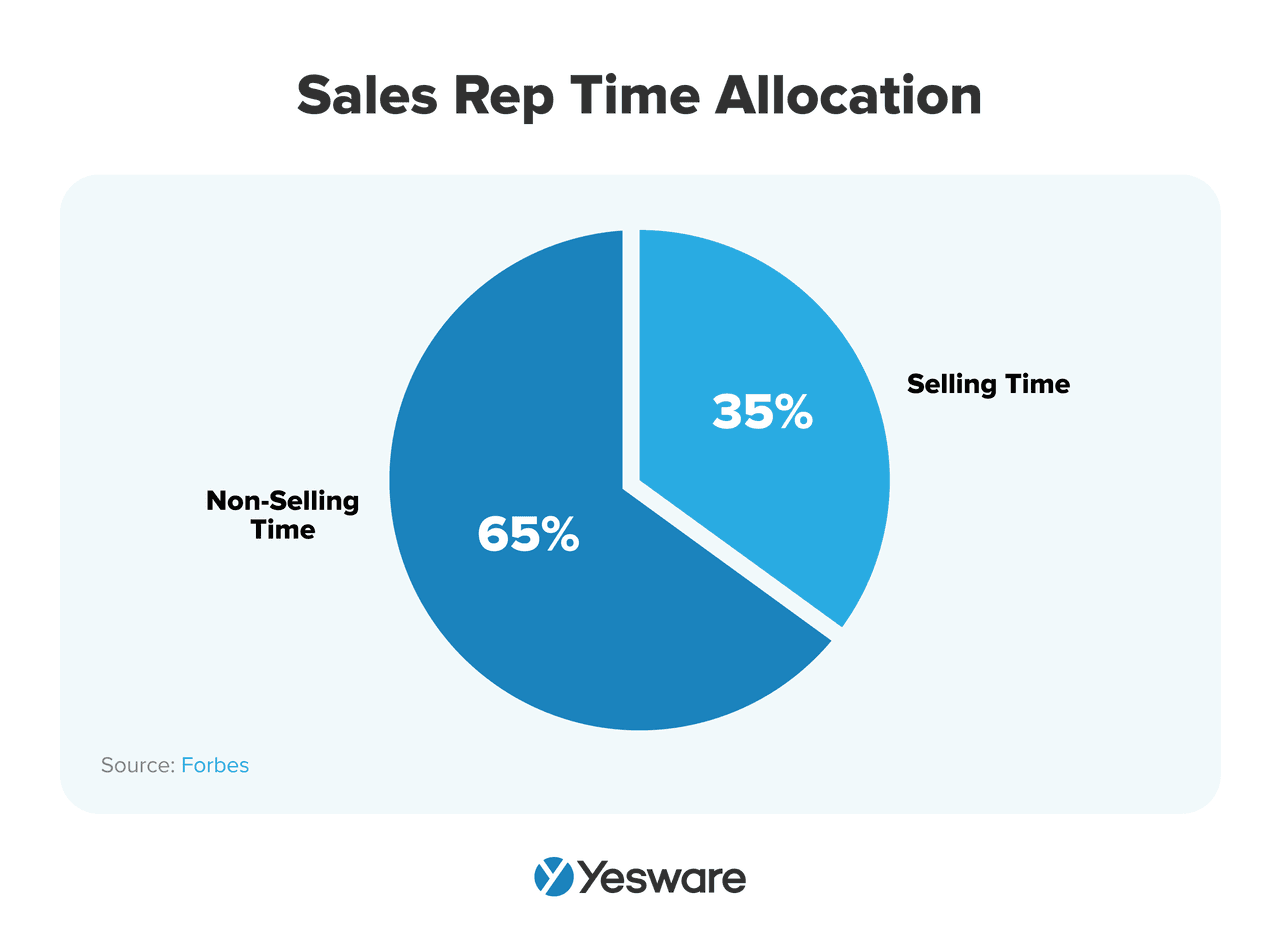 Sales managers largely agree with this sentiment, with 79% of executives agreeing that improving productivity among their sales and marketing teams is crucial to meeting new goals.
Sales managers largely agree with this sentiment, with 79% of executives agreeing that improving productivity among their sales and marketing teams is crucial to meeting new goals.
There are sales productivity tools to streamline just about every stage of the sales process, including lead generation, CRM tasks, internal and buyer-facing communication, analytics and reporting, email automation, proposal creation, call transcription, employee training, and more.
Top Features to Look for in Sales Productivity Tools
With so many sales productivity tools available to sales and marketing teams, finding the right ones for your organization can feel overwhelming.
Look for the following features in any sales productivity tool you choose to help optimize your investment and ensure a smooth onboarding process.
Automation
Sales productivity tools are designed to save time for sales reps — the more powerful the sales automation capabilities, the better.
Look for platforms/apps that make automation intuitive and action-oriented and offer improvements to your existing workflows.
Integration
It’s also important to choose sales productivity tools that will easily integrate with your existing tech stack.
It would be counterproductive to choose a single sales productivity platform that would require you to revamp your entire suite of tools.
Sales productivity tools are meant to save your team time and effort, not make things more complicated.
Reporting & Analytics
One thing that some sales teams neglect when searching for sales productivity tools is the ability to track their efforts and results.
The best sales productivity tools should offer powerful data collection, analysis, and reporting features that give insight into its functionality, as well as the team’s sales performance overall.
Types of Sales Productivity Tools
There are plenty of ways for teams to improve their sales productivity across all stages of the sales pipeline.
For most teams, it likely won’t make sense to invest in a productivity tool for every stage or subprocess throughout the funnel.
Choose the tools that will improve the area in which your team is in most need of assistance when it comes to saving time and increasing efficiency.

1. Pipeline Management
Many sales teams choose to invest in sales productivity tools that improve their pipeline management. 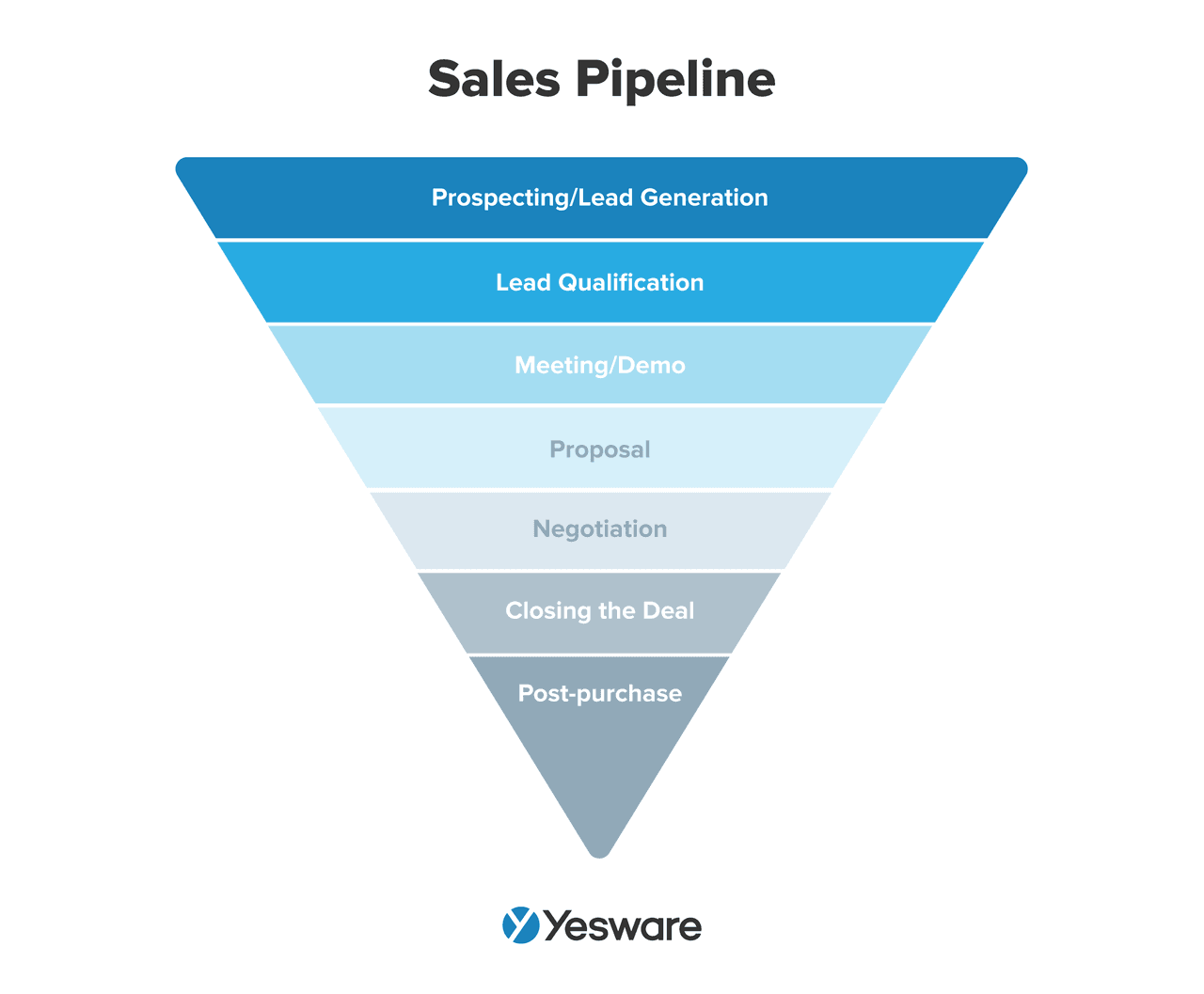 Pipeline management includes prioritizing deals, monitoring pipeline metrics, analyzing data, and more.
Pipeline management includes prioritizing deals, monitoring pipeline metrics, analyzing data, and more.
Sales productivity tools that help with pipeline management give sales teams visibility into every stage, decision point, and interaction within the sales funnel.
They can also help sales teams with lead scoring, as well as general prioritization of sales opportunities and deal management to increase close rates.
Pipeline management tools also save sales teams a ton of time when it comes to sales forecasts, as these platforms make easy work of collecting and analyzing the sales data and trend analysis necessary to generate these reports.
Examples
- Vendasta CRM
- Salesforce Sales Cloud
- HubSpot Sales
2. Sales Enablement
Sales enablement is all about equipping the sales team with the tools, training, and resources they need to close more deals with less time and less effort. 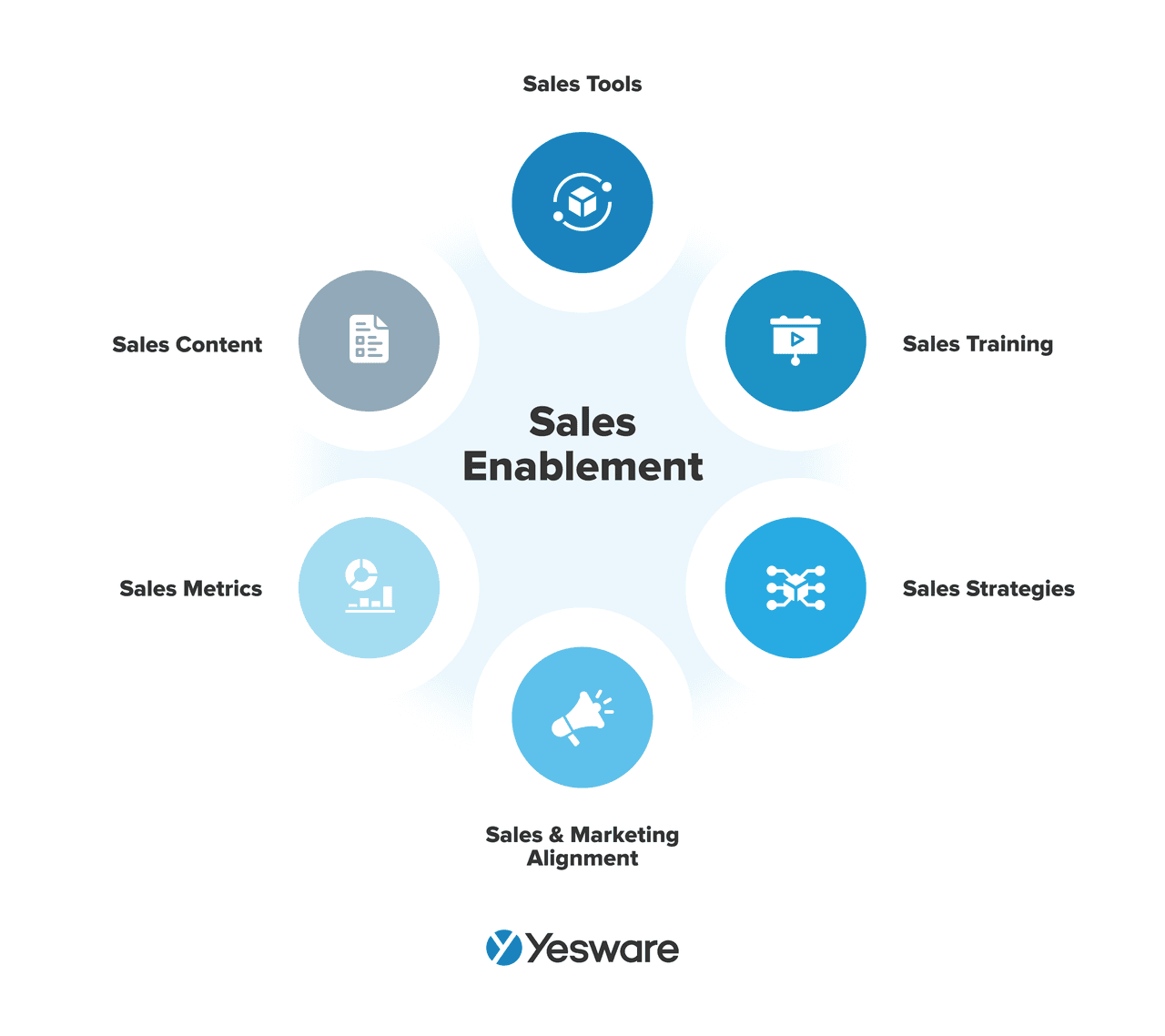 The primary goal of sales enablement is to strengthen relationships between buyers and sellers by equipping sales teams with the tools they need to add value to buyers exactly where they are in the sales process.
The primary goal of sales enablement is to strengthen relationships between buyers and sellers by equipping sales teams with the tools they need to add value to buyers exactly where they are in the sales process.
Sales productivity tools that cover sales enablement can help with a wide range of processes, including:
- Content creation/organization
- Sales training/coaching programs
- Onboarding
- Brand consistency and optimization
Effective sales enablement can significantly shorten the sales cycle and improve win rates.
Examples
- Seismic
- Highspot
- Showpad
3. Sales Engagement
A sales engagement platform also helps sales teams with a variety of processes. 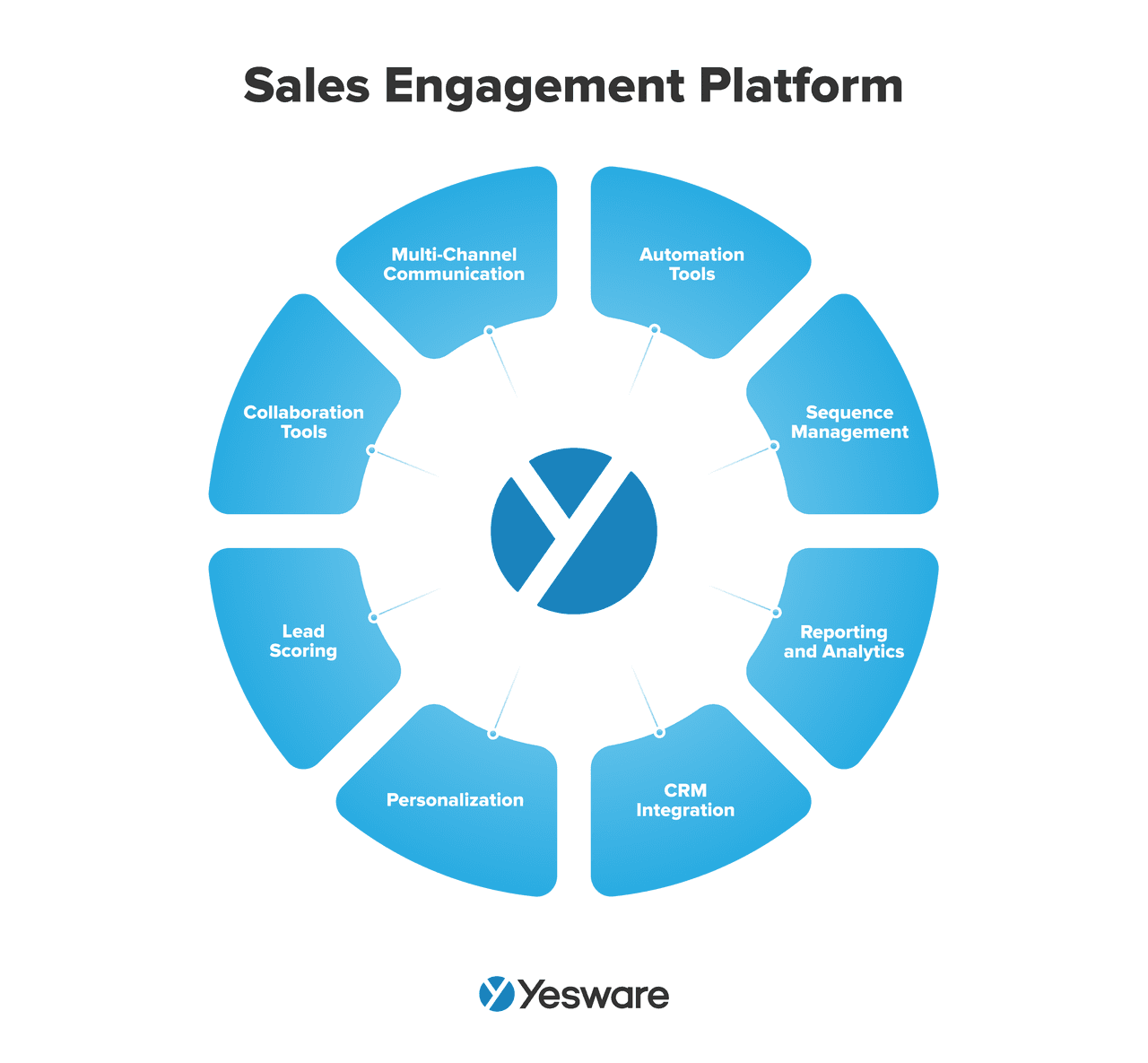 These sales productivity tools are designed to help sales reps communicate more effectively with buyers. These platforms track, manage, and intelligently analyze all interactions to improve the overall process and can even intuitively recommend content and touchpoints for sales reps.
These sales productivity tools are designed to help sales reps communicate more effectively with buyers. These platforms track, manage, and intelligently analyze all interactions to improve the overall process and can even intuitively recommend content and touchpoints for sales reps.
Sales engagement tools can also help sales teams automate and personalize all of their outreach, making it easy to streamline communication across channels and scale campaigns without sacrificing customization.
Examples
- Yesware
- Outreach
- SalesLoft
4. Time Tracking & Accountability
Time tracking & accountability software can save sales managers and teams a lot of time when it comes to managing who’s doing which tasks throughout the sales process.
Be careful not to use tools like these as micromanagement assistants. Instead, time tracking tools can provide good insight into where sales reps are losing valuable time, and can help them identify where they’re better off delegating tasks to automation.
The goal of these tools is to identify and offset as much time as possible that could otherwise be spent on direct sales activities.
Examples
- Time Doctor
- Toggl
- Hubstaff
5. Dialers
A sales dialer (sometimes also known as an autodialer) can save a surprising amount of time for sales reps — some studies suggest up to 45 minutes per day. This is an overlooked sales productivity tool/feature that can make a big difference in a sales rep’s day-to-day workflow.
A dialer tool automates and logs sales calls to increase the volume of calls made, as well as reduce the idle time between calls.
A great autodialer tool should also integrate with your CRM platform.
Examples
- RingCentral
- Five9
- Dialpad
6. Cold Emailing
A sales productivity tool that’s designed to assist with cold emailing can go a long way in saving sales reps time and effort. This method is a critical element of sales prospecting. 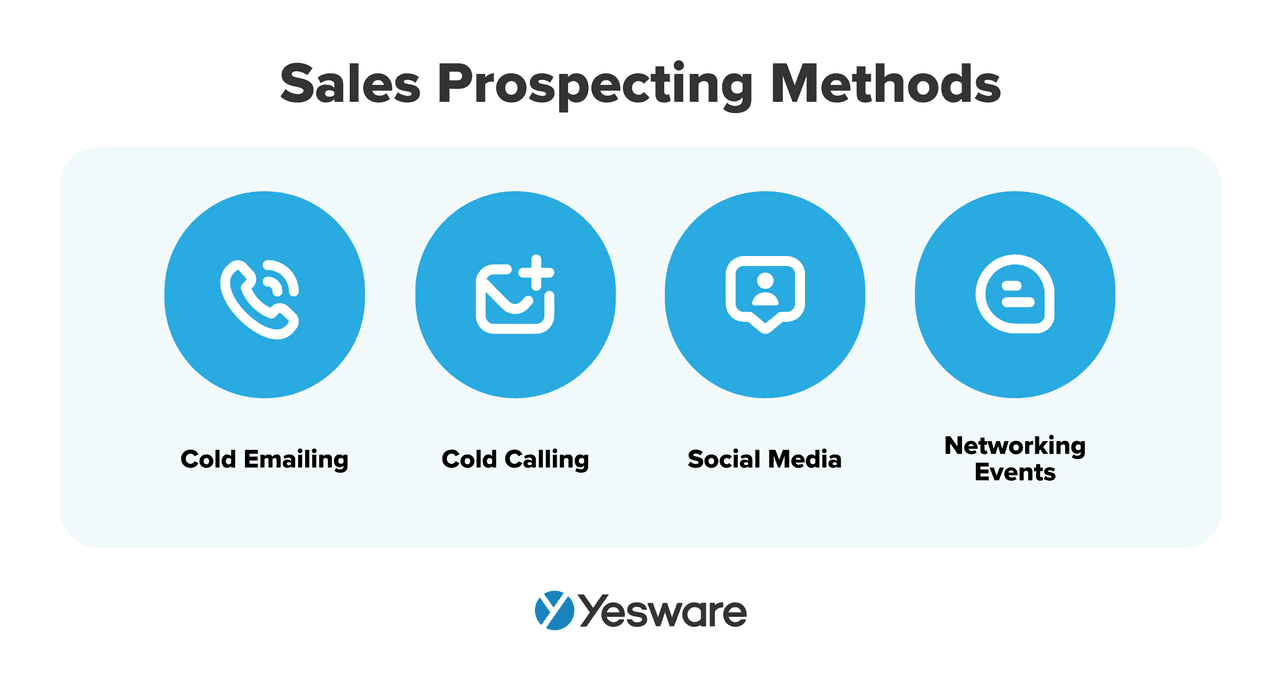 These tools automate multichannel outreach campaigns at scale while still maintaining personalization and customization.
These tools automate multichannel outreach campaigns at scale while still maintaining personalization and customization.
This type of software can also easily handle tracking, A/B testing, and cadence optimization to improve click, open, and response rates.
Examples
- Yesware
- Mailchimp
- Constant Contact
7. Prospecting
Prospecting is one of the most challenging parts of the sales process for most sales reps.
That’s where sales prospecting tools come into play. 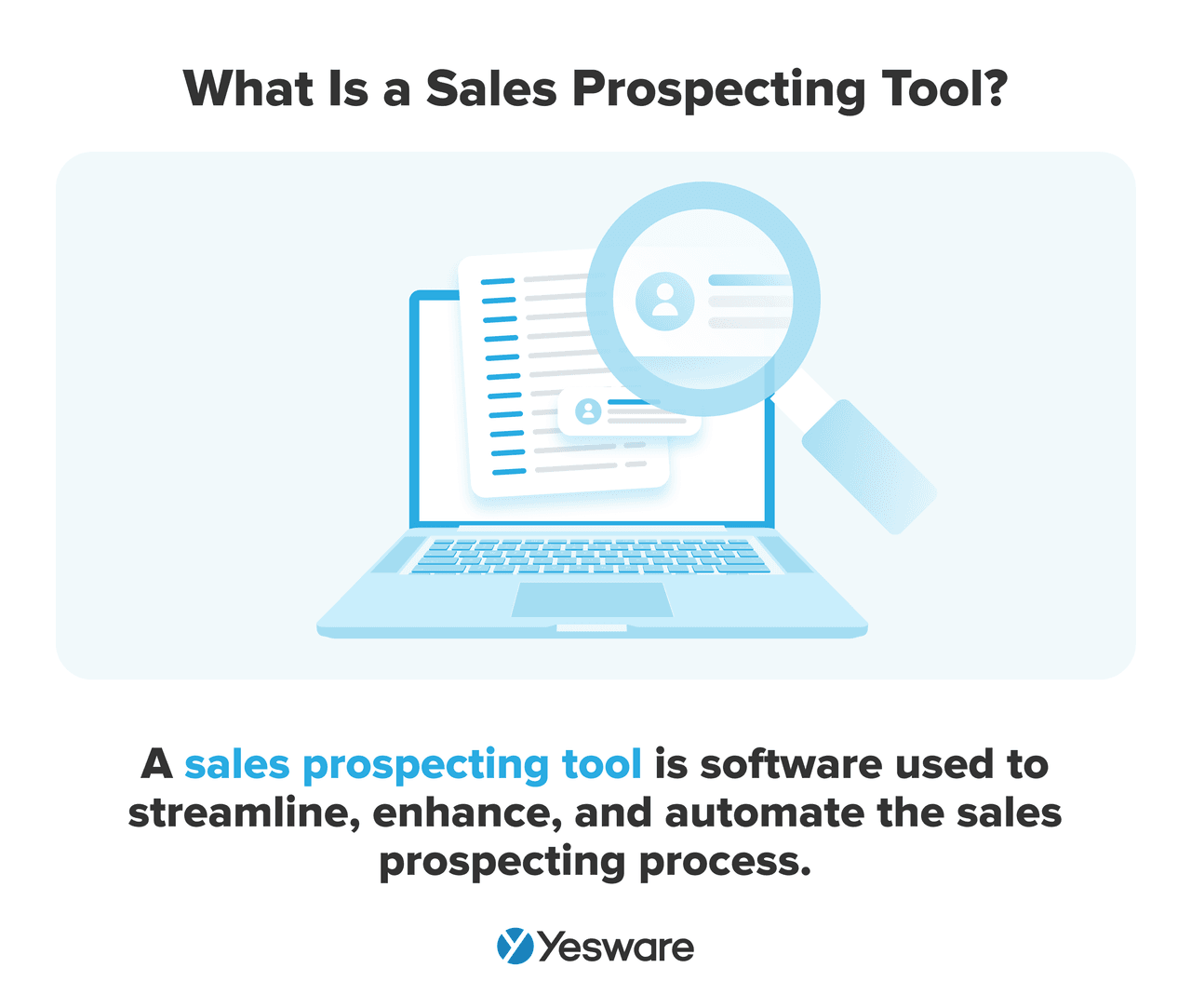 A sales productivity tool that’s designed to help with prospecting can save sales reps a tremendous amount of time and logistical effort early in the sales process, which will ultimately trickle down to other improvements throughout the rest of the pipeline.
A sales productivity tool that’s designed to help with prospecting can save sales reps a tremendous amount of time and logistical effort early in the sales process, which will ultimately trickle down to other improvements throughout the rest of the pipeline.
Prospecting software helps sales reps identify ideal buyers early and engage them with the content that’s most likely to resonate with them.
There’s also the emergence of AI for sales prospecting, which helps sales professionals complete various parts of the prospecting process more efficiently.
Examples
- Leadfeeder
- Yesware
- ZoomInfo
8. Lead Enrichment
Many sales teams use lead enrichment tools to help improve their interactions with buyers. 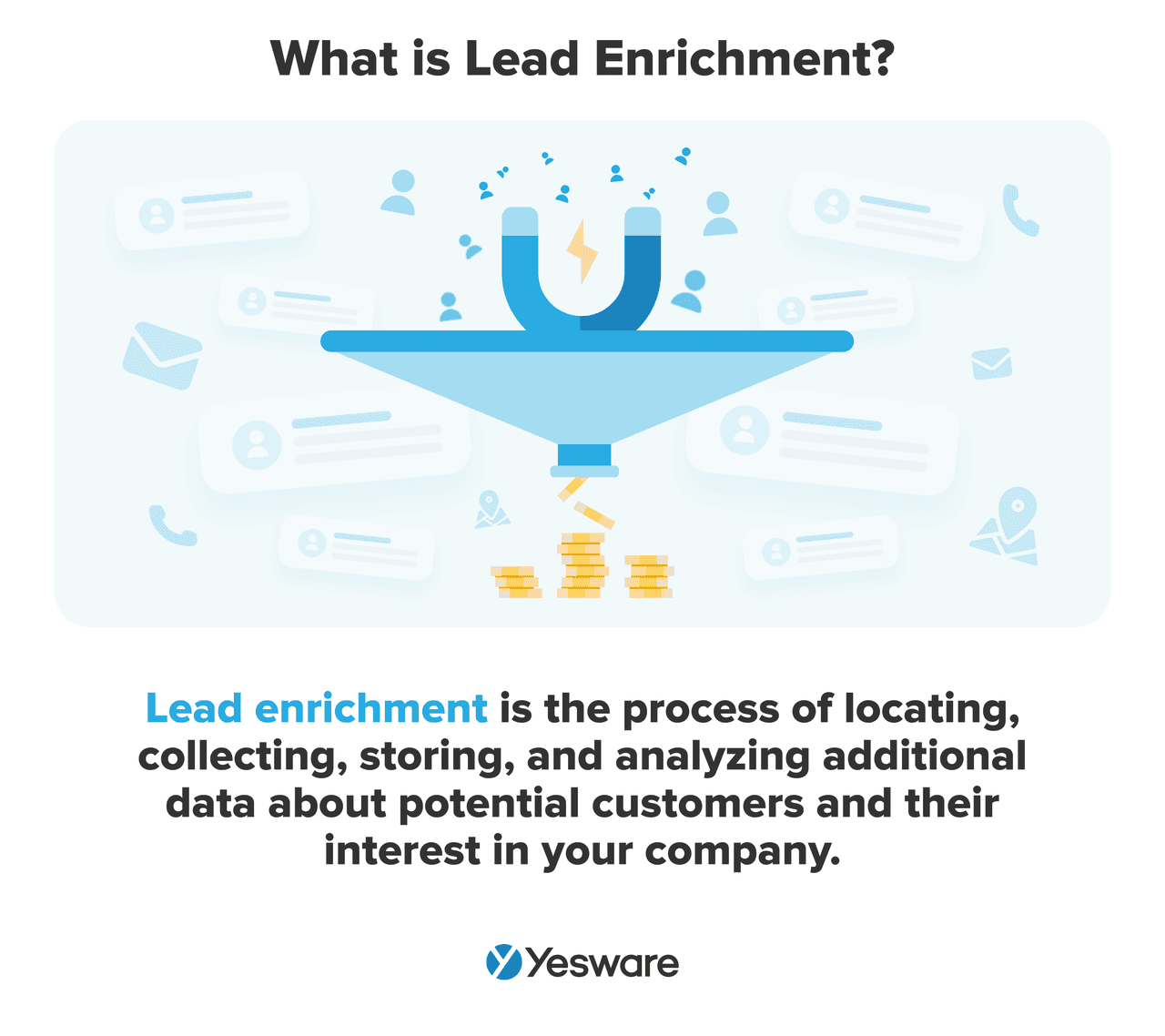 Lead enrichment tools enhance your team’s existing sales data to improve the likelihood of converting each opportunity.
Lead enrichment tools enhance your team’s existing sales data to improve the likelihood of converting each opportunity.
The more data sales reps can access about each prospect, the more likely they are to connect on a deeper level about their challenges and needs. Lead enrichment helps sales reps personalize their outreach efforts on a more sophisticated level.
Examples
- Clearbit
- Vendasta
- Lusha
9. Meeting Scheduling
Many sales productivity tools include features that make it virtually seamless to schedule meetings, assign tasks, and integrate smoothly with existing events and/or calendars between your team and buyers.
Sales productivity features dedicated to scheduling help buyers and sellers skip the back-and-forth that can sometimes take longer than the meeting itself. Appointments are made easily and according to the buyer’s schedule.
Examples
- Calendly
- Doodle
- Yesware
Tip: Looking for more tools for your tech stack? Grab our free ebook below.
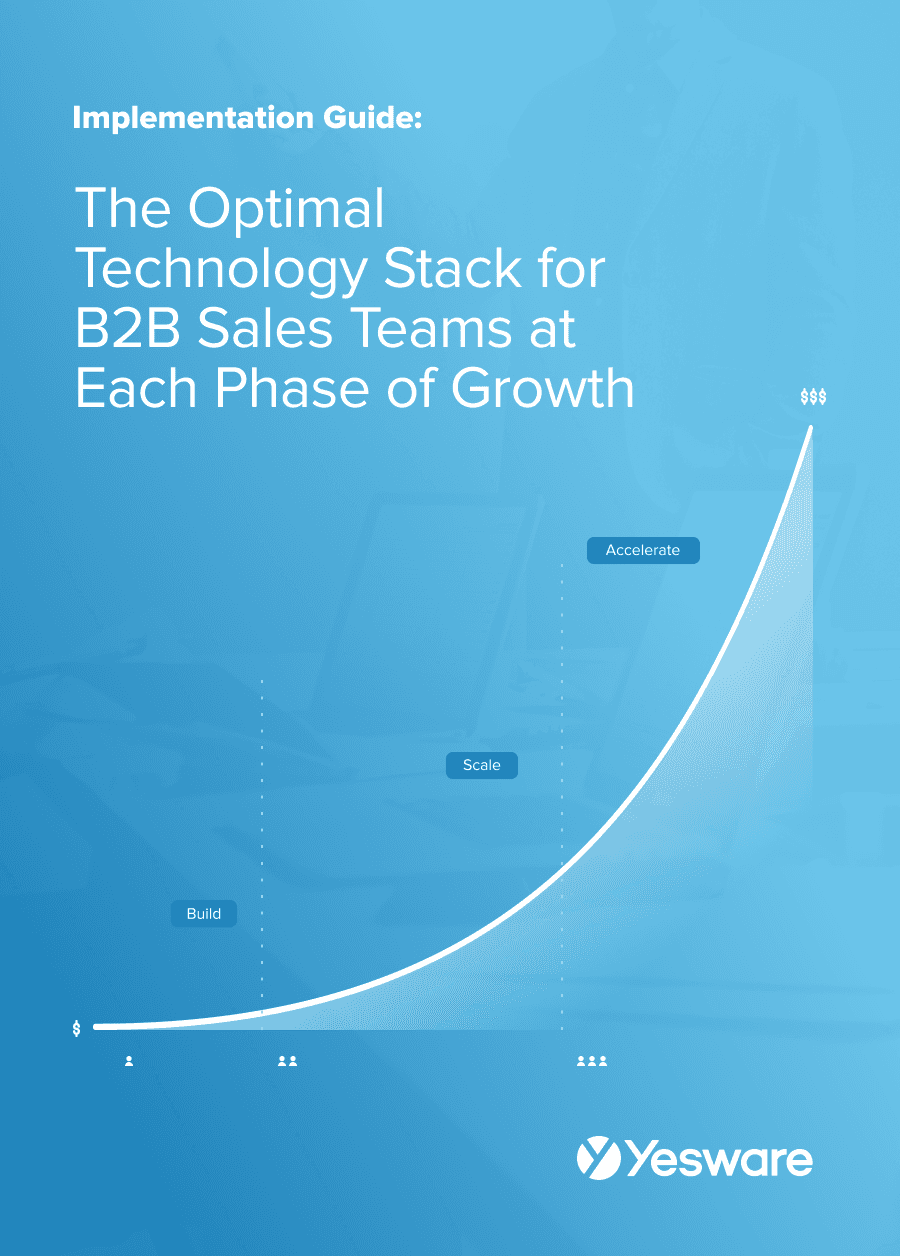 The Optimal Technology Stack for B2B Sales TeamsUsing data from the most successful business-scaling models, we designed a blueprint for the exact technology your business needs at each phase of growth.
The Optimal Technology Stack for B2B Sales TeamsUsing data from the most successful business-scaling models, we designed a blueprint for the exact technology your business needs at each phase of growth.
10. Sales Intelligence
Sales intelligence software provides data-driven insights that guide sales teams through strategic and day-to-day decisions. 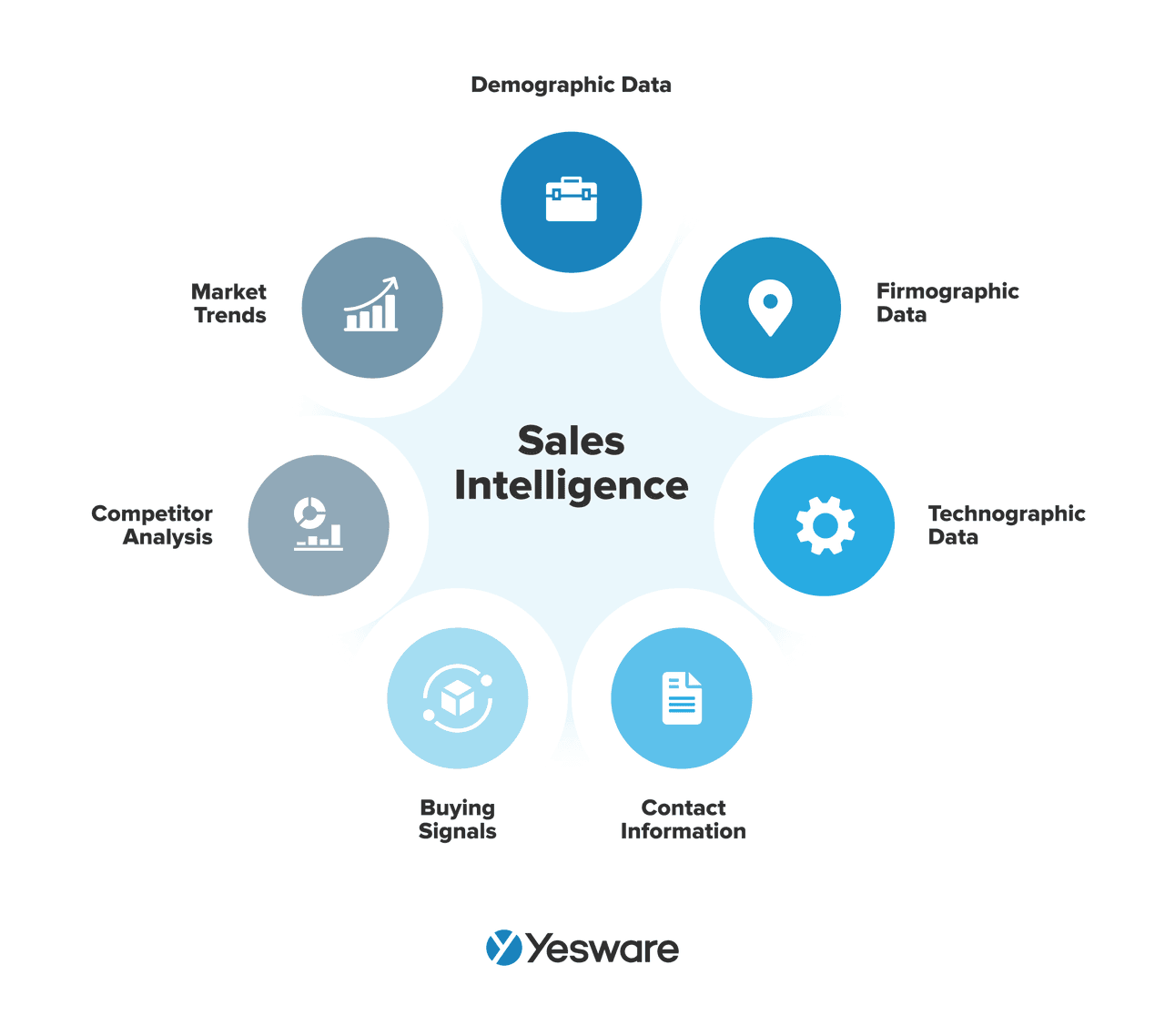 This type of sales productivity tool has tons of benefits.
This type of sales productivity tool has tons of benefits.
Sales intelligence software offers sales teams competitive intelligence for better positioning in the market, prospect analysis for better relationships, and can even identify trends and predict upcoming opportunities.
The better your team’s sales intelligence, the more time your reps can spend making genuine, data-based connections with well-qualified buyers.
Examples
- LinkedIn Sales Navigator
- InsideView
- Gong
11. Proposals
Sales proposal software gives sales reps the ability to streamline the creation of personalized, professional, electronic proposals.
With e-signature features and user-friendly design templates, the contract approval process is fast and seamless on most proposal software platforms. Many of these tools also give users the ability to track proposal views and interactions.
Examples
- PandaDoc
- Proposify
- Qwilr
12. Configure-Price-Quote (CPQ)
Configure-price-quote (CPG) software automates the often complicated and error-prone process of calculating pricing for complex and/or customized deals.
Many SaaS offers and other software packages are built via custom packages, and pricing can become intricate in a hurry. CPQ software automates these pricing calculations to eliminate errors, speed up the quote-to-cash process, and ensure pricing consistency and compliance across deals.
Examples
- Salesforce CPQ
- Oracle CPQ
- Apttus
13. Sales Meeting Transcriptions
Most sales deals are won based on the relationship built between buyer and seller.
Sales reps need to be able to draw actionable insight from what they learn from prospects throughout every stage and every conversation of the sales process.
Sales transcription software can be a huge asset in helping sales reps be active listeners and ensuring they don’t miss (or misremember) crucial sales information.
This sales productivity software automatically transcribes sales calls and meetings for later review, and can even analyze call content and recommend next steps and/or coaching.
Examples
- Otter.ai
- Chorus.ai
- Gong
How Yesware Enhances Your Sales Productivity
Yesware was built to be the one-stop, look-no-further sales productivity tool to meet sales reps’ most important needs.
First, our multichannel email campaigns make it easy to create, automate, track, and optimize personalized email outreach at scale.

Sales reps can import lists of prospects, automatically customize emails with dynamic fields, and automate follow-ups to go out when prospects don’t respond or book a meeting.
Next, our Meeting Scheduler feature allows sales reps and buyers to set meetings without ever leaving their inbox.
When you insert your customized link into your email, your recipients will be able to choose a time slot that works for both of you.
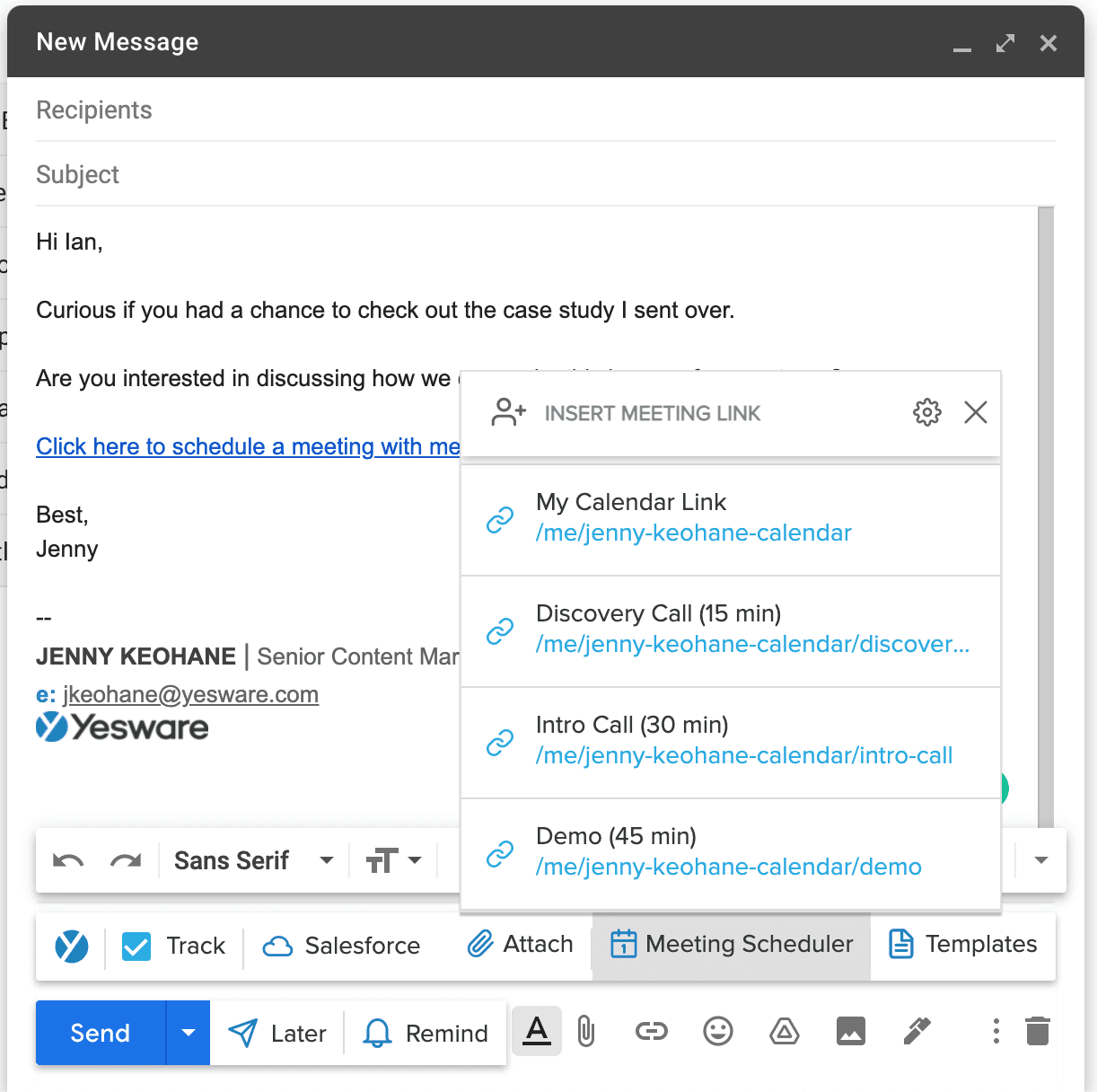
When your recipient books the meeting, you receive a confirmation email with the date, time, and relevant information. The calendar event will auto-populate on your calendar, too.
This removes all the back-and-forth that typically comes with booking meetings.
Lastly, our powerful reporting and analytics tool give sales teams all the insight they need to optimize every aspect of their outreach, from timing to recipient to content.

Here, you can pinpoint your warmest leads, find your highest-converting campaigns and templates, and uncover what’s working across your entire team.
The best part is? All features live right inside your Gmail or Outlook inbox.
Yesware serves everyone on the sales team and adjacent, including:
- Sales reps
- Sales managers
- Sales operations
- Sales executives
- Marketing
- Customer success
- Account management
- HR & Recruiting
- Entrepreneurs
- Real estate
Our software meets the needs of teams that work inbound sales, outbound sales, account-based sales, and everything in between.
Comparison: Yesware vs. Other Sales Productivity Tools
Many sales productivity tools are designed around a similar core set of features.
What sets Yesware apart is its usability and affordability.
At Yesware, we believe that sales productivity tools should make sales reps more productive. That’s why most of our features exist directly within the inbox and are designed to streamline processes, not make them more complex.
Yesware is also more affordable than most other productivity tools, even among those with fewer features and capabilities. See the prices below:

Yesware was created to make outreach more powerful, more personalized, and more straightforward — all at the same time.
And with sophisticated but easy-to-read reports, your team will never have to wonder how to keep improving.
How to Implement Sales Productivity Tools for Maximum Impact
Sales productivity tools can make a big impact on your daily sales routine, as well as the results of your overall sales process.
With that being said, it’s important that your team implements them properly for best results.
Set Goals
If you really want to know how successful your sales productivity tool is, set a SMART sales goal before you start using it in your process.

This goal-setting format will help everyone on your team understand how and when to track their usage/results with the tool and will also help managers determine its effectiveness.
Train Your Team
Even your best sales tool is only as effective as the user behind the screen.
Everyone who will be expected to use your sales productivity tools should receive the same training. This will help ensure that all users are on the same page about how, when, and why to use the tool, which will improve reporting accuracy.
Solicit Feedback
Sales productivity tools exist to make sales teams’ lives easier. Ideally, sales managers will have asked for their reps’ feedback before investing in a new sales tool, but it’s equally as important to ask for their input as the tool is used in the day-to-day sales process.
Be sure to check in with your sales team on a regular basis after implementing a new sales productivity tool. Even after it’s clear that the tool is a worthwhile investment, it’s important to keep the lines of communication open about a tool’s effectiveness, especially as the team and tech stack grow and change.
Try Yesware Today
Effective sales productivity tools are essential for getting ahead in today’s competitive B2B sales landscape, but the right tools (and the right number of them) can make or break your success.
Get sales tips and strategies delivered straight to your inbox.
Yesware will help you generate more sales right from your inbox. Try our Outlook add-on or Gmail Chrome extension for free, forever!
Related Articles
Casey O'Connor
Jenny Keohane
Jenny Keohane
Sales, deal management, and communication tips for your inbox

